Topic: Oddities
The Pause That Refreshes
Hollywood Boulevard, Friday, May 26, 2006 - detail across the street from Grauman's Chinese Theatre. Just a touch of the third world in what is otherwise the most American of places.
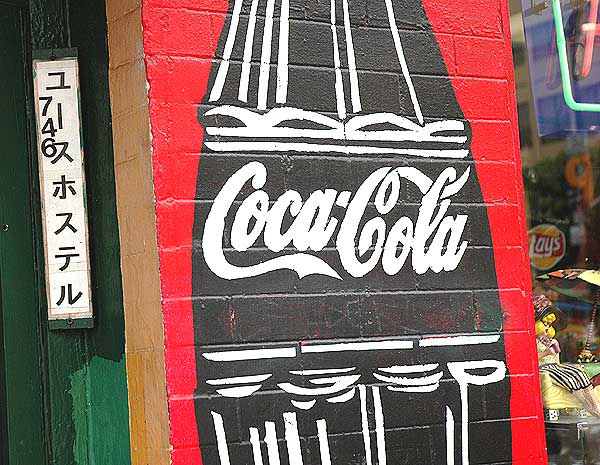
| « | May 2006 | » | ||||
| S | M | T | W | T | F | S |
| 1 | 2 | 3 | 4 | 5 | 6 | |
| 7 | 8 | 9 | 10 | 11 | 12 | 13 |
| 14 | 15 | 16 | 17 | 18 | 19 | 20 |
| 21 | 22 | 23 | 24 | 25 | 26 | 27 |
| 28 | 29 | 30 | 31 | |||



Dumbo is back. Nixon isn't.The El Capitan Theatre is a fully restored movie palace at 6838 Hollywood Boulevard in the Hollywood district of Los Angeles. It is owned and operated by The Walt Disney Company.
When the theater opened in 1926 as "Hollywood's First Home of Spoken Drama," it featured a Spanish colonial exterior designed by the architectural firm of Morgan, Walls and Clements, and a lavish East Indian interior by theatre designer G. Albert Lansburgh. It was later completely remodeled in the moderne style. In 1941, "Citizen Kane" made its world debut here. Senator Richard Nixon delivered his famous Checkers Speech from the theater in 1952, then a NBC studio.
After many years of disuse, The Walt Disney Company purchased the theater and paid for a fourteen million dollar renovation. The theater reopened in 1991 with the premiere of "The Rocketeer." In recent years, many of Disney's feature films have premiered here, accompanied by live stage shows.

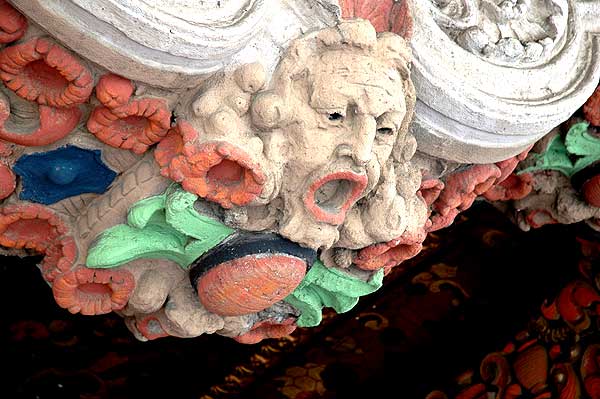

And the rest is history.Miles Davis was born into a relatively wealthy African-American family living in Alton, Illinois. His father, Miles Henry Davis, was a dentist, and in 1927 the family moved to a white neighborhood in East St. Louis. They also owned a substantial ranch, and Davis learned to ride horses as a boy.
Davis's mother, Cleota, wanted Davis to learn the violin - she was a capable blues pianist, but kept this hidden from her son, feeling that "negro" music was not sufficiently genteel. At the age of nine, one of Davis's father's friends gave him his first trumpet, but he did not start learning to play seriously until the age of thirteen, when his father gave him a new trumpet and arranged lessons with local trumpeter Elwood Buchanan and, later, a man named Mone Peterson. Against the fashion of the time, Buchanan stressed the importance of playing without vibrato, and Davis would carry his clear signature tone throughout his career.
Clark Terry was another important early influence and friend of Davis's. By the age of sixteen, Davis was a member of the musician's union and working professionally when not at high school. At seventeen, he spent a year playing in bandleader Eddie Randle's "Blue Devils". During this time, Sonny Stitt tried to persuade him to join the Tiny Bradshaw band then passing through town, but Cleota insisted that he finish his final year of high school.
In 1944, the Billy Eckstine band visited St. Louis. Dizzy Gillespie and Charlie Parker were members of the band, and Davis was taken on as third trumpet for a couple of weeks because of the illness of Buddy Anderson. When Eckstine's band left Davis behind to complete the tour, the trumpeter's parents were still keen for him to continue formal academic studies.
... In 1944 Davis moved to New York City, ostensibly to take up a scholarship at the Juilliard School of Music. In reality, however, he neglected his studies and immediately set about tracking down Charlie Parker.
Cool. And note that for the birthday there's a new four-CD boxed set available, Miles Davis - The Legendary Prestige Quintet Recordings. From the mid-fifties you get Davis with John Coltrane, Red Garland, Paul Chambers and Philly Joe Jones. All recorded by Rudy Van Gelder at Van Gelder Studio in Hackensack, digitally remastered in from the original analog masters, with bonus CD of eight previously unavailable radio and television audio performances - two tunes from The Tonight Show With Steve Allen among others. The cover art is by Davis - the painting "New York by Night" - and you five complete transcriptions of Davis' solos. Buy it? Just a thought.The album is rather fine. Moody, "cool" and spare late fifties jazz. It holds up well. It's a lot freer and less mannered than the stuff on the album that is so famous. It's better, and sounds just fine now. Odd that when I hear it I know this is what is known as the "West Coast Sound," born here in Los Angeles with The Birth of the Cool album. Recorded in Paris for a French film, this might just as well have been recorded at the old Lighthouse in Hermosa Beach.
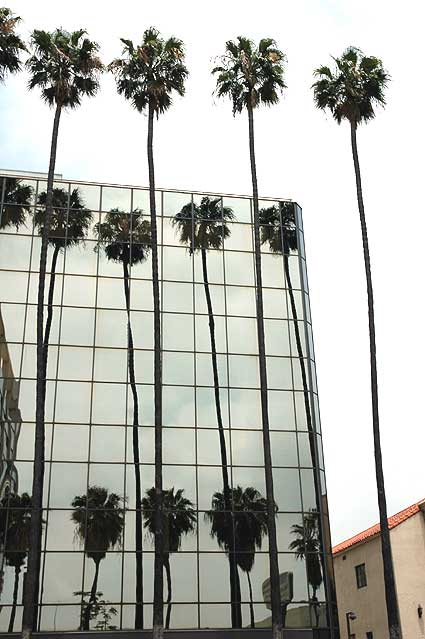
And Marilyn Monroe is showing off for him.
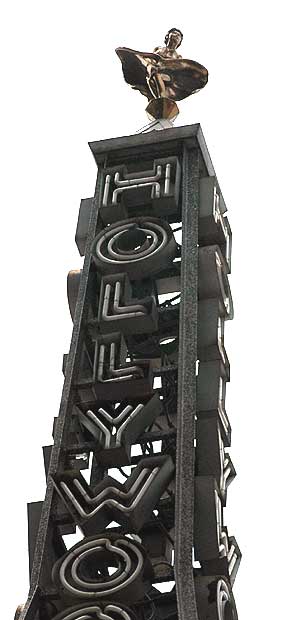


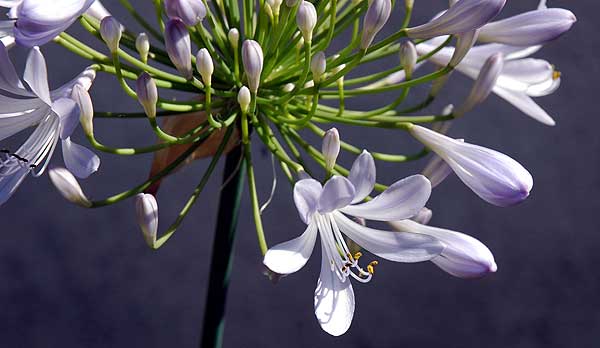
And you remember how The Doors' LA Woman opens -L.A. apartments have been the scene of grisly Hollywood suicides, murders and accidents. The condo complex of 875 Bundy Ave. in Brentwood became famous after Nicole Simpson and Ron Goldman were found knifed to death on June 12, 1994. (After O.J. Simpson stood criminal and civil trials for the murders, the large numbers of looky-loos caused the condo association to change the street number to 879 and change the appearance of the entrance.) Inside an apartment at 139 Fraser St. in Santa Monica, model-actress Margaux Hemingway committed suicide with an overdose of pills on July 2, 1996, the same day her grandfather Ernest Hemingway took his life 35 years earlier. In 1981, actor William Holden was found dead in an apartment at Shorecliff Towers at 535 Ocean Ave. in Santa Monica after falling, striking his head and then bleeding to death. In an apartment at 86575 Comstock Ave. in Westwood, 22-year-old comic sensation Freddie Prinze committed suicide by shooting himself in 1977. In 1976, Rebel Without a Cause co-star Sal Mineo, 37, was robbed and stabbed to death in the carport of his apartment building at 8563 Holloway Drive in West Hollywood. The daughter of TV host Art Linkletter (Kids Say the Darndest Things) jumped to her death from her sixth-floor apartment at 8787 Shoreham Drive in West Hollywood. And one of the biggest crimes in Hollywood took place in 1922 when silent-film director William Desmond Taylor was shot in the back of the head in his bungalow apartment in Alvarado Court on S. Alvarado St. in Westlake Park. The murder sent shock waves through the film community because Taylor was a celebrity, several movie figures were implicated and the neighborhood was affluent. Not only was the murder never solved (sound familiar, O.J. and Robert Blake?), but, as with most historical spots in L.A., that apartment complex is now a parking lot.
There's even a techno-trance band called Hollywood Bungalow, but they probably don't live here.Well, I just got into town about an hour ago
Took a look around, see which way the wind blow
Where the little girls in their Hollywood bungalows
Are you a lucky little lady in the city of light
Or just another lost angel... city of night
City of night, city of night, city of night...
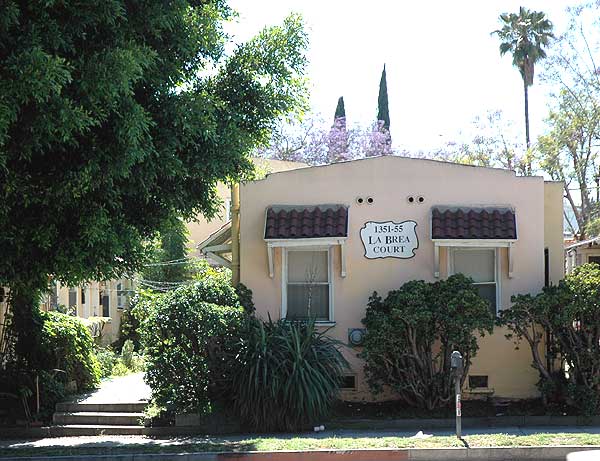
A decade later the film industry had generated a ton of money and edifices like this went up, the west facing wall of something or other on the southeast corner of North Sycamore and Hollywood Boulevard. The thirties were fun too.
